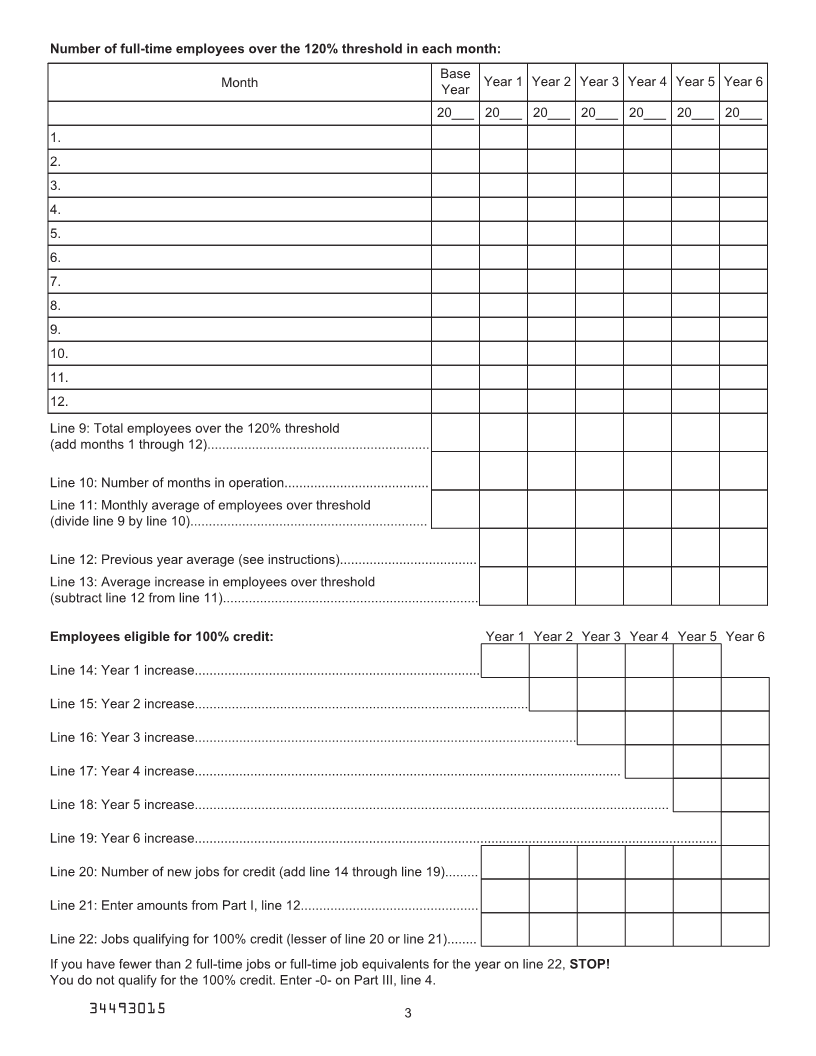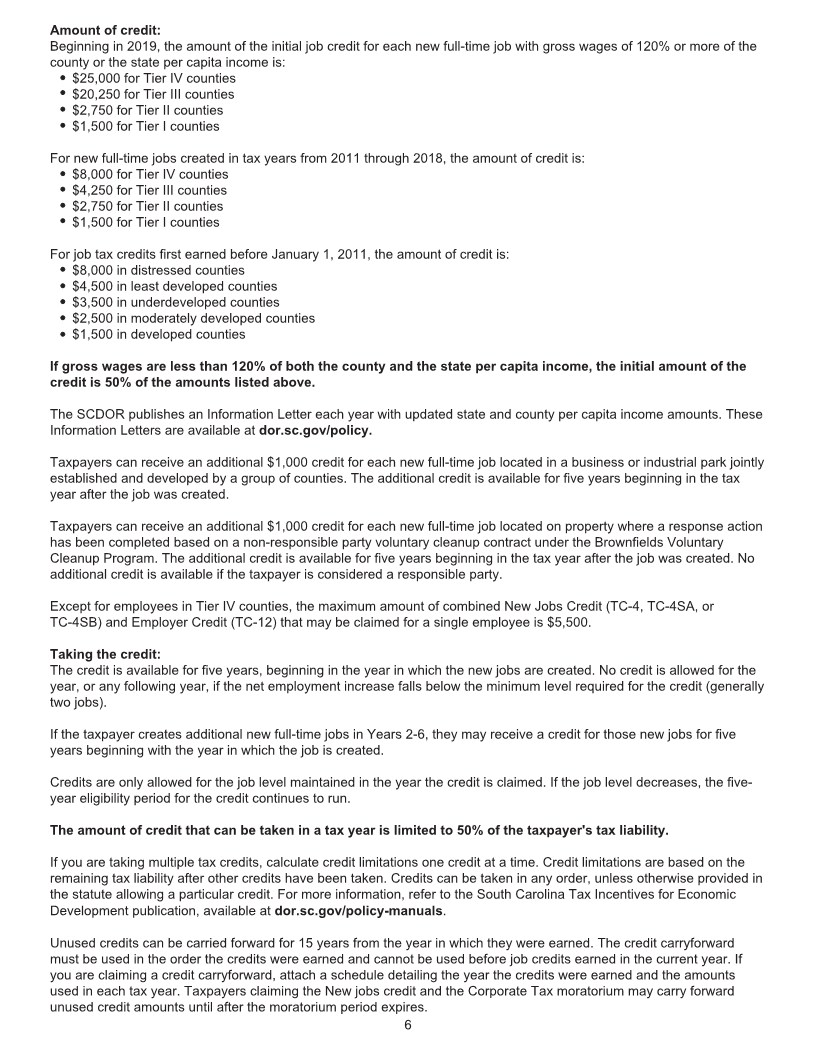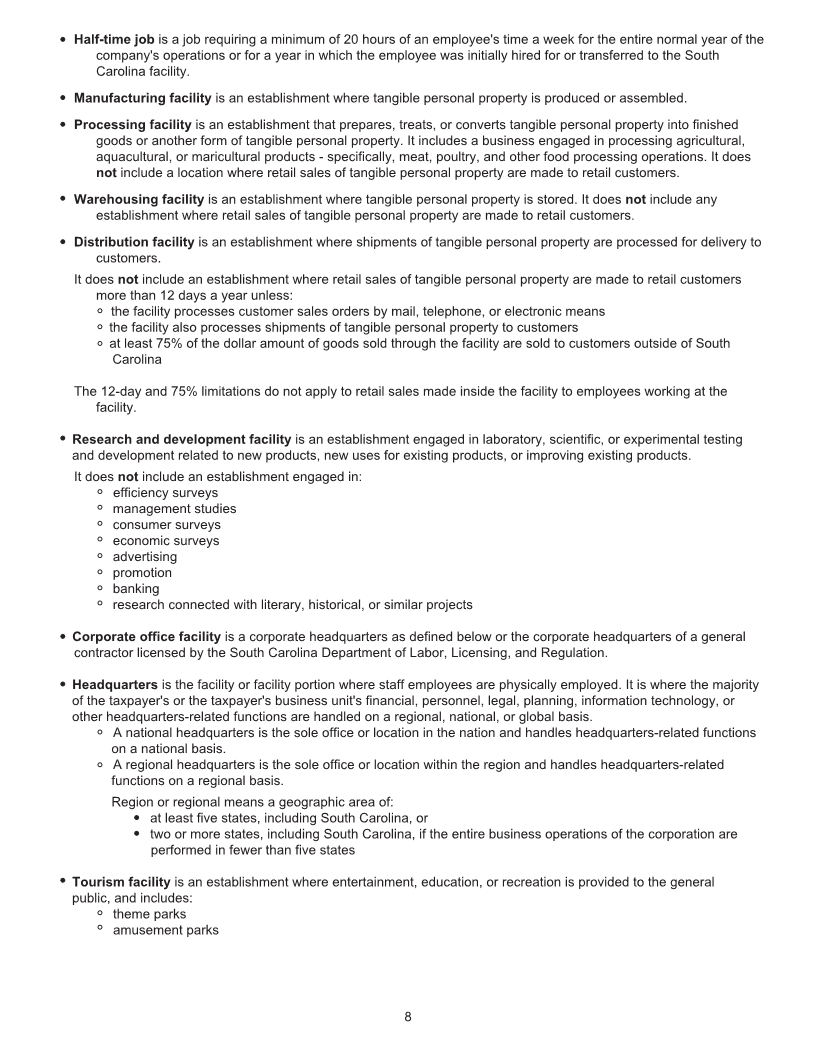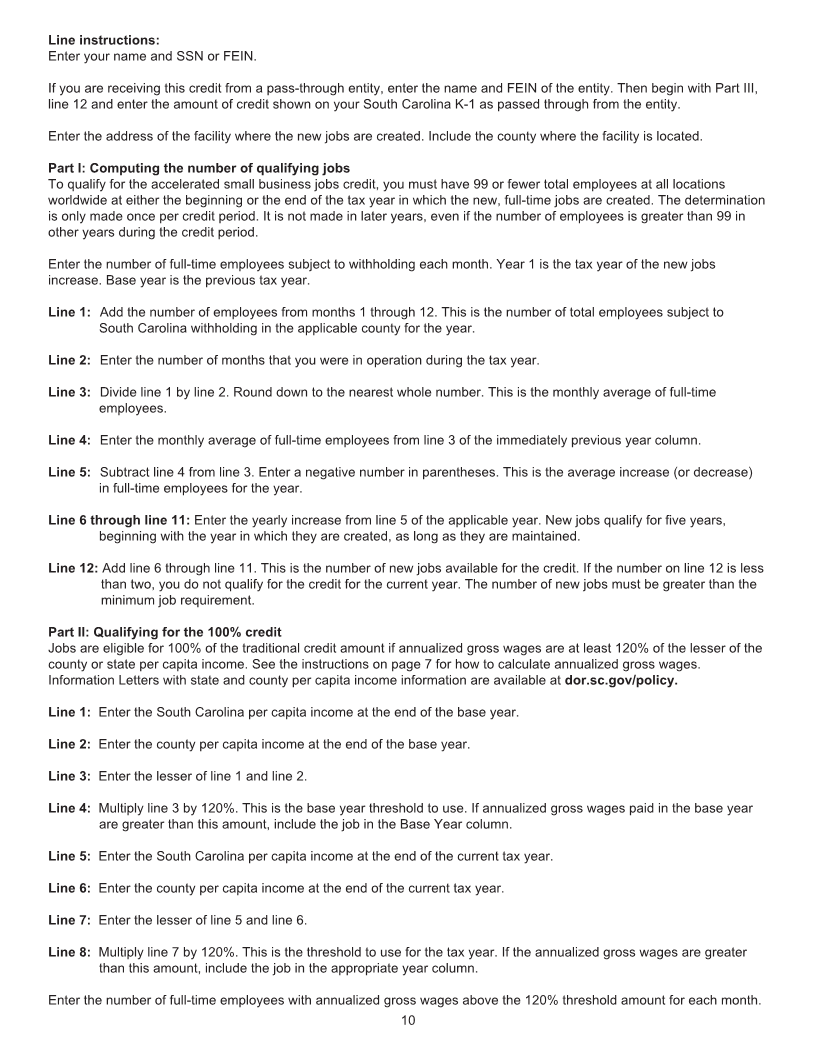
Enlarge image
1350
STATE OF SOUTH CAROLINA SC SCH.TC-4SA
DEPARTMENT OF REVENUE (Rev. 7/31/24)
ACCELERATED SMALL 3449
dor.sc.gov BUSINESS JOBS CREDIT 20
Name SSN or FEIN
If credit was received from a pass-through entity, name and FEIN of entity
Street address of facility creating new jobs
County City State ZIP
Part I: Computing the number of qualifying jobs
In the tax year when you first claimed the credit, did you have a total of 99 or fewer full-time jobs everywhere, at either the
beginning or ending of the tax year? Yes No If No, STOP - you do not qualify for this credit
Number of full-time employees subject to withholding during each month:
Base
Month Year 1 Year 2 Year 3 Year 4 Year 5 Year 6
Year
20___ 20___ 20___ 20___ 20___ 20___ 20___
1.
2.
3.
4.
5.
6.
7.
8.
9.
10.
11.
12.
Line 1: Total employees (add months 1 through 12)....................
Line 2: Number of months in operation.........................................
Line 3: Monthly average of full-time employees
(divide line 1 by line 2)..................................................................
Line 4: Previous year average (see instructions).......................................
Line 5: Average increase in full-time employees
(subtract line 4 from line 3)........................................................................
34491019 1










